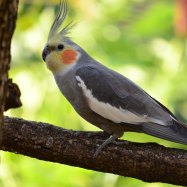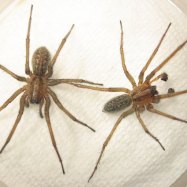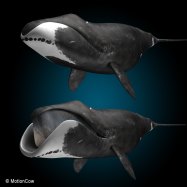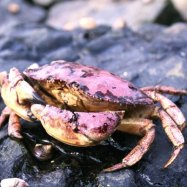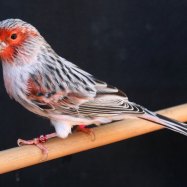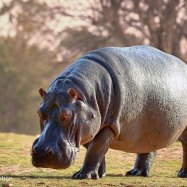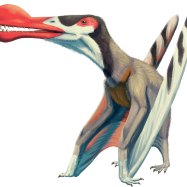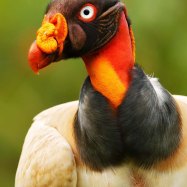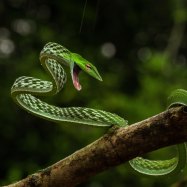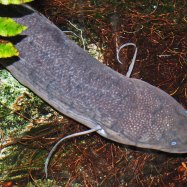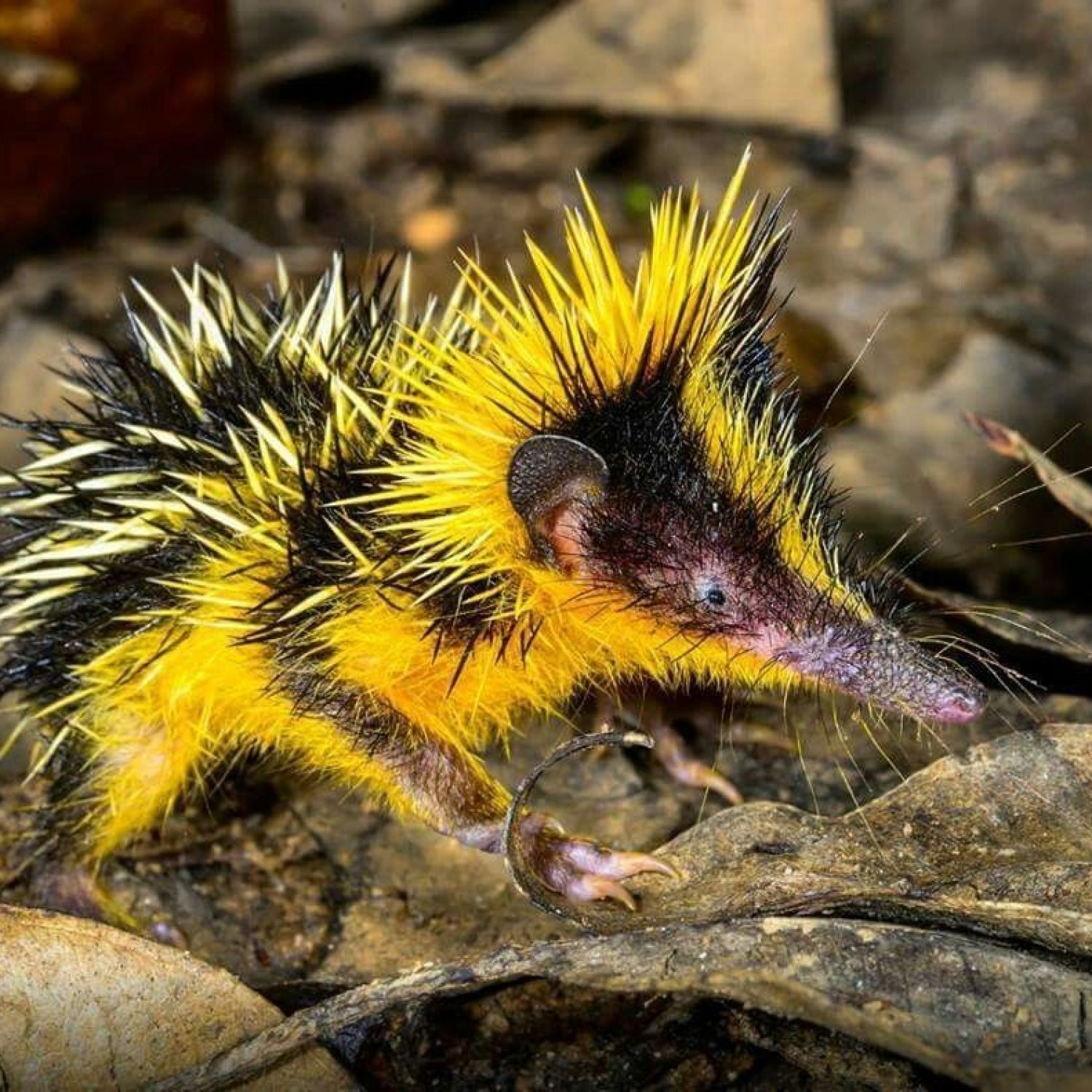
Tenrec
10-39 cm (3.9-15.4 inches)
Tenrecs are unique animals with small, stocky bodies and short limbs, ranging in length from 10 to 39 cm. These fascinating creatures are mainly found in Madagascar and belong to the Tenrecidae family. With their diverse range of habitats and behaviors, tenrecs are a must-see for any animal lover.
Animal Details Summary:
Common Name: Tenrec
Kingdom: Animalia
Habitat: Various habitats including forests, grasslands, and wetlands
A Hidden Gem of Madagascar: The Tenrec
Hidden deep in the forests of Madagascar, a small, unique creature roams among the underbrush. With its stout body, short legs, and sharp snout, the Tenrec may seem like a cross between a shrew and a hedgehog, but it is, in fact, a mammal all its own. This elusive creature, with the scientific name Tenrecidae, has captured the hearts of animal enthusiasts around the world. In this article, we will delve into the world of Tenrecs and explore their fascinating features, behaviors, and habitats Tenrec.The Tenrec Family
The Tenrec is a member of the Tenrecidae family, which is part of the order Afrosoricida. This order, also known as the tenrec or otter shrew order, consists of small mammals found exclusively in Africa. The family Tenrecidae includes 30 known species, with most of them being found in Madagascar, and a few others in neighboring African countries.Habitat and Distribution
Tenrecs are highly adaptable creatures and can be found in various habitats, including forests, grasslands, and even wetlands. In Madagascar, they are mainly found in the eastern and western rainforests, as well as the spiny forests in the south. Some species have also been found in the dry deciduous forests and rice fields of the island.Outside of Madagascar, Tenrecs are found in parts of mainland Africa, particularly in the central and eastern regions. They have been spotted in countries such as Tanzania, Kenya, and the Congo. Some species, like the tailless tenrec, have even made their way to the island of Mauritius Telescope Fish.
Feeding Habits
Tenrecs are known to have a unique and versatile diet. While some species are strictly carnivorous, others have developed a more diverse palate, including insects, fruits, and even nectar. Some species, like the web-footed tenrec, even have specialized toes that allow them to capture water insects, making them excellent swimmers.Insects are a staple in the Tenrec diet, with ants, termites, beetles, and crickets being among their favorites. Their sharp snouts and specialized teeth make it easy for them to dig through the soil in search of insects and their larvae.
Mating and Reproduction
Tenrecs have a relatively short lifespan, with most species living only 4-6 years. This means that they must reproduce quickly to ensure the survival of their species. Mating can occur throughout the year, but most species have a specific breeding season.Male Tenrecs have enlarged testes, which allow them to produce large amounts of sperm during mating season. They compete for females by fighting and marking their territory with urine. Once the female has selected her mate, she will give birth to a litter of six to ten pups after a gestation period of around 60 days.
Unique Features of Tenrecs
Tenrecs may be small and elusive, but they have a variety of unique features that make them stand out among other mammals. Let's take a closer look at some of these features.Coloration
Tenrecs come in a variety of colors, depending on the species. Some are dark brown, while others can be almost completely white. Their fur is often dense and coarse, helping them ward off insects and other parasites in their natural habitats.
Body Shape and Size
Tenrecs are small to medium-sized mammals, with most species averaging around 10-39 cm in length. They have a stout body and short limbs, making them well-suited for their fossorial (underground) lifestyle. Their combination of shrew-like features, such as a long, pointed snout, and hedgehog-like features, such as spines on their back, makes them unique within the animal kingdom.
Senses
While Tenrecs have poor eyesight, they have an excellent sense of smell. Their snouts are lined with sensory whiskers called vibrissae, which they use to locate their prey and navigate through their complex underground habitats.
Their sense of hearing is also highly developed, thanks to their large external ears. These ears are essential in detecting predators and communicating with other Tenrecs.
Bizarre Behaviors
Tenrecs have some strange behaviors that seem out of character for a mammal. For instance, the lesser hedgehog tenrec, found in Madagascar, can roll itself into a tight ball when threatened, similar to a hedgehog. Some species are also known to produce high-pitched vocalizations, which are believed to be used for communication.
One of the most bizarre behaviors of Tenrecs is their ability to enter into a state of torpor, where their body temperature and metabolic rate slow down significantly. This state can last for several hours or even days, helping Tenrecs conserve energy in times of scarcity.
Threats and Conservation
Unfortunately, like many other species in Madagascar, Tenrecs are facing significant threats due to increased human activity. Deforestation, hunting, and invasive species have led to a decline in their populations.Some species, like the streaked tenrec, are listed as vulnerable on the IUCN Red List, while others, like the greater hedgehog tenrec, are listed as endangered. However, efforts are being made to conserve their populations through various conservation projects and initiatives.
Final Thoughts
In conclusion, the Tenrec is a hidden gem of Madagascar, with its unique features, behaviors, and adaptability setting it apart from other mammals. While they may not be well known globally, they hold a special place in the hearts of the Malagasy people, and they are an essential part of the island's ecosystem. With the ongoing conservation efforts, we can hope to continue to admire these fascinating creatures for many years to come.

Tenrec
Animal Details Tenrec - Scientific Name: Tenrecidae
- Category: Animals T
- Scientific Name: Tenrecidae
- Common Name: Tenrec
- Kingdom: Animalia
- Phylum: Chordata
- Class: Mammalia
- Order: Afrosoricida
- Family: Tenrecidae
- Habitat: Various habitats including forests, grasslands, and wetlands
- Feeding Method: Carnivorous and insectivorous
- Geographical Distribution: Madagascar and parts of mainland Africa
- Country of Origin: Madagascar
- Location: Mainly found in Madagascar
- Animal Coloration: Varies depending on species, can be brown, black, gray, or white
- Body Shape: Small to medium-sized with stocky bodies and short limbs
- Length: 10-39 cm (3.9-15.4 inches)
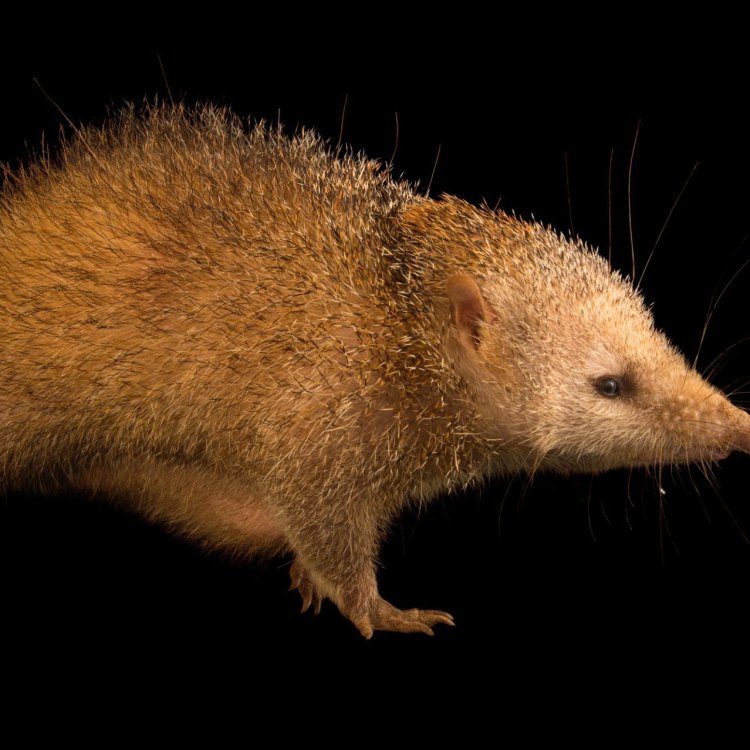
Tenrec
- Adult Size: Varies depending on species, can range from 10 to 39 cm (3.9 to 15.4 inches)
- Average Lifespan: Varies depending on species, can range from 2 to 8 years
- Reproduction: Sexual
- Reproductive Behavior: Mating occurs during specific seasons
- Sound or Call: Varies depending on species
- Migration Pattern: Non-migratory
- Social Groups: Solitary or live in small groups
- Behavior: Nocturnal and primarily terrestrial
- Threats: Deforestation, habitat loss, and hunting
- Conservation Status: Varies depending on species, some are considered endangered
- Impact on Ecosystem: Important in maintaining insect and small mammal populations
- Human Use: Sometimes kept as pets
- Distinctive Features: Sharp spines, long snouts, and ability to roll into a ball
- Interesting Facts: There are over 30 known species of tenrecs
- Predator: Predators include snakes, birds of prey, and other carnivorous mammals
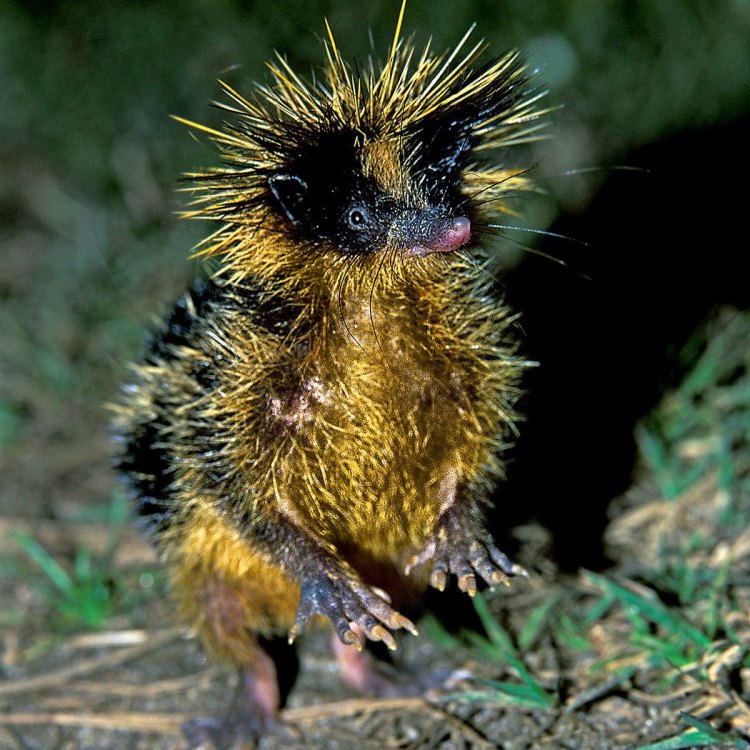
Tenrecidae
The Fascinating Tenrec: An Unusual Mammal with Unique Features
In the vast and diverse world of mammals, there is one group that stands out for its unusual features and behaviors - the tenrecs. With over 30 known species, these small mammals can be found exclusively on the island of Madagascar and some nearby islands. They are a prime example of how evolution can create a diverse and fascinating range of species within a confined geographical area.From their sharp spines and long snouts to their ability to roll into a ball, tenrecs have many distinctive features that set them apart from other mammals PeaceOfAnimals.Com. In this article, we will delve deeper into the world of tenrecs, exploring their size, lifespan, behaviors, and impact on the ecosystem.
Size and Lifespan
Tenrecs can vary in size depending on the species, with adults ranging from 10 to 39 cm (3.9 to 15.4 inches) in length. They have a diverse range of body shapes, from stocky and stout to slender and elongated. Some tenrecs also have sharp spines covering their bodies, while others have soft fur.
Their size and body shape also play a role in their lifespan, which can vary from 2 to 8 years. Generally, larger species tend to live longer than smaller ones. This may be due to several factors, including their size being a deterrent to predators and their ability to store more fat reserves for periods of food scarcity Tibetan Mastiff.
Reproduction and Behavior
Like most mammals, tenrecs reproduce sexually. However, their reproductive behavior is unique and differs between species. In some species, mating occurs during specific seasons, while in others, it can happen year-round. Female tenrecs can have multiple litters in a year, giving birth to an average of 5 to 10 young at a time.
Tenrecs are mostly solitary animals, but some species can live in small groups. They are nocturnal and primarily terrestrial, meaning they spend most of their time on land. This behavior likely evolved due to competition with other nocturnal animals on the island and the need to find food.
Sound or Call
Just like their behaviors, the sounds and calls of tenrecs also vary between species. Some species, such as the lesser hedgehog tenrec, communicate with high-pitched squeaks, grunts, and squeals. Meanwhile, others, like the common tenrec, make loud clicking sounds by rubbing their quills together as a form of communication.
Their sounds and calls play an essential role in their social interactions and mating rituals, allowing them to communicate with one another and attract potential mates.
Migration and Social Groups
Tenrecs are non-migratory animals, meaning they do not travel long distances as a group to find food or breeding grounds. They have adapted to their environment on the island of Madagascar and its surrounding islands and have no need for long-distance migration.
As mentioned earlier, tenrecs are mostly solitary, but some species can form small social groups. These typically consist of a dominant male and several females. In these groups, they share territory and resources, such as food and shelter.
Threats to Tenrecs and Conservation Status
Despite their unique features and behaviors, tenrecs are facing various threats to their survival. Deforestation, habitat loss, and hunting are the main threats facing tenrecs today. The conversion of forests into agricultural land and the growth of human settlements have significantly reduced their habitat, leaving them with less space to live and find food.
As a result, some species, like the greater hedgehog tenrec and the highland streaked tenrec, are considered endangered by the International Union for Conservation of Nature (IUCN). Other species, such as the eastern shrew tenrec and the Mediterranean large-eared tenrec, are listed as vulnerable.
Impact on the Ecosystem
Tenrecs are a crucial part of the ecosystem in Madagascar, playing an important role in maintaining the balance of insect and small mammal populations. As an insectivorous species, they help control insect populations, which can have a detrimental effect on plant life if left unchecked. They also serve as prey for larger mammals, birds of prey, and reptiles, contributing to the food web of their native habitats.
However, due to their declining population numbers, the loss of tenrecs could have a knock-on effect on the ecosystem. Without them, the insect population may increase, leading to the destruction of plants and crops and potentially causing a domino effect on other species.
Human Use and Unique Features
Tenrecs have been kept as pets in Madagascar for centuries. They are a source of food and fur for some indigenous peoples, and their quills are used in traditional medicine. While their use has decreased due to conservation efforts, it is still a practice in some areas.
Their unique features have also made tenrecs a popular tourist attraction. Many visitors to Madagascar seek out the opportunity to see these fascinating creatures in their natural habitat.
One of the most distinctive features of tenrecs is their sharp spines, which provide protection from predators. If threatened, they can roll into a ball, with their spines pointing out, making it challenging for predators to attack them. This behavior is similar to that of hedgehogs, and it is believed that tenrecs evolved this adaptation independently from their distant cousins.
Their long snout is also a unique feature among mammals. Some experts believe it may have evolved to help them root out insects from the ground, while others believe it may be for sensing vibrations and smells in their environment.
Interesting Facts
There are over 30 known species of tenrecs, each with its own unique features and behaviors. They range from the small and agile lesser hedgehog tenrec to the large and stocky common tenrec. They also come in a variety of colors, including black, brown, and even bright orange.
In the past, tenrecs were often confused with hedgehogs due to their similar appearance and defensive behaviors. However, they are not related, with tenrecs belonging to the Afrotheria order, while hedgehogs belong to the Laurasiatheria order.
Tenrecs are also one of the only mammal species to have more than seven cervical vertebrae, which contribute to their flexible bodies and ability to curl into a ball.
Predators
Tenrecs face threats from various predators in their native habitats. Snakes, birds of prey, and other carnivorous mammals, such as mongooses and civets, are known predators of tenrecs. Their spines provide some defense against these predators, but some species are also quick and agile, making it easier for them to escape.
In addition to natural predators, tenrecs are also at risk of being hunted by humans for food and their quills, making conservation efforts even more crucial for their survival.
The Future of Tenrecs
The decline of tenrec populations due to human activities is a significant concern for conservationists and experts. Efforts are being made to protect their habitats and educate local communities on the importance of preserving these unique mammals.
Conservation initiatives, such as protected areas and breeding programs, are also being implemented to help increase their population numbers and ensure a sustainable future for tenrecs.
In conclusion, tenrecs are a prime example of the vast diversity and uniqueness of the animal kingdom. From their size and behaviors to their impact on the ecosystem and their use by humans, tenrecs have many fascinating features that make them an essential species to protect and preserve. Their survival not only ensures the balance of the ecosystem but also contributes to the wonder and beauty of our world.
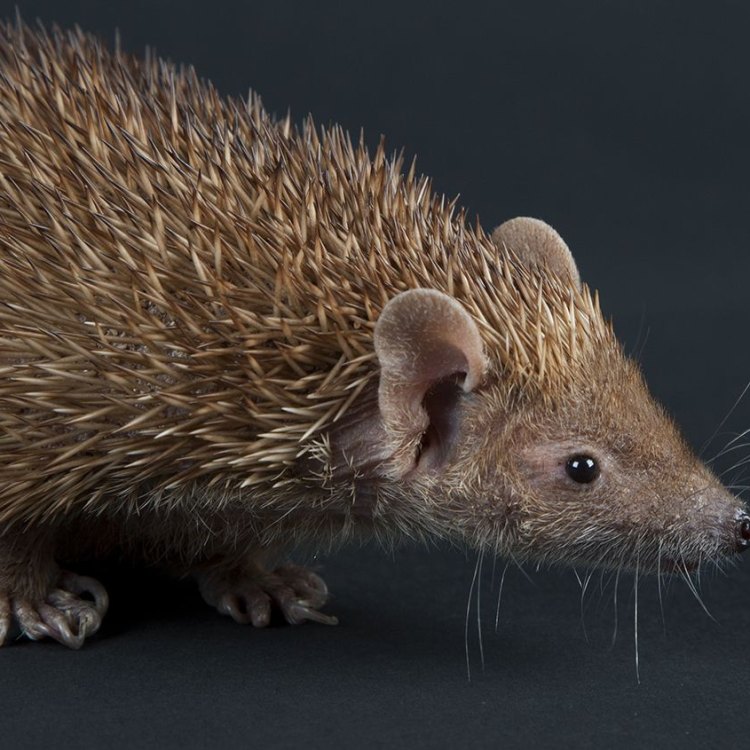
A Hidden Gem of Madagascar: The Tenrec
Disclaimer: The content provided is for informational purposes only. We cannot guarantee the accuracy of the information on this page 100%. All information provided here may change without prior notice.

